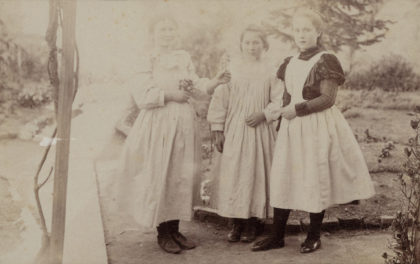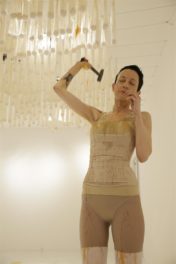We’ve asked curators from the Getty Museum and Getty Research Institute to share short reflections on works of art they’re thinking about right now. These recordings feature stories related to our daily lives.
This week, curator Idurre Alonso imagines a trip to the lush Brazilian landscape through an illustration in a 1648 book. To learn more about this artwork, visit: http://hdl.handle.net/10020/cat_ALMA2113047222000155.
Over the next few weeks, look for new recordings every Tuesday.

Frontispiece for Historia naturalis Brasiliae, 1648, Willem Piso
Listen to the full series of short reflections here.
Transcript


JAMES CUNO: Hello, I’m Jim Cuno, president of the J. Paul Getty Trust. As we all adapt to working and living under these new and unusual circumstances, we’ve asked curators from the Getty Museum and Getty Research Institute to share short reflections on works of art they’re thinking about right now. We’ll be releasing new recordings on Tuesdays over the next few weeks. I hope you’ll find these stories about our daily lives—from laundry on the line to a dog at a scholar’s feet—thought provoking, illuminating, and entertaining.
IDURRE ALONSO: Hi, my name is Idurre Alonso and I work as curator of Latin American collections at the Getty Research Institute.
So I chose this image, which is the frontispiece of a book called Natural History of Brazil, written by Willem Piso in 1648, as I was thinking how we’re basically trapped in our houses. And we can’t get out and we can’t travel. And so thinking on how this image takes me to, to a place in Brazil almost this idyllic place, almost like paradise. With this very lush nature, and I would like to be there.
And what I like about it is that you have all these different elements, [it] is full of details that talk about how many different species, new species, and new trees and new fruits were found in Latin America. One of the elements that I really love are the monkeys in the top part, holding the banner with the title of the book. And I also love this sloth climbing into the tree in the right part. And of course, then you have the couple, the indigenous couple, which is depicted in a very classical, conventional way.
And all these depictions in this print is referencing paradise, the biblical passage of paradise. And so instead of having Adam and Eve, then you have this couple. You can see this snake climbing, instead of a tree, well it is a tree, it is a palm tree. So using a local tree from Latin America.
Looking at all these elements, I think about how much I would like to be in a place like this. And I also think about what is the other side of, of this print. This idyllic image contrasts with a reality of what actually happened during the colonial time, how indigenous groups were decimated and forced to convert to Catholicism, and how also natural resources were heavily extracted many times by enslaved people.
So those are all the things that I that I can think of when I, when I look at this image and imagine myself there while I’m sitting in my sofa here in Los Angeles.
CUNO: To learn more about Willem Piso’s Historia naturalis Brasiliae, published in 1648, click the link in this episode’s description or look for it on primo.getty.edu.
JAMES CUNO: Hello, I’m Jim Cuno, president of the J. Paul Getty Trust. As we all adapt to working and living under these new and unusual circumstances, we’ve asked curators from the Getty Museum and Getty Research Institute to share short reflections on works of art they’re thinking about r...

See all posts in this series »








Love the Getty